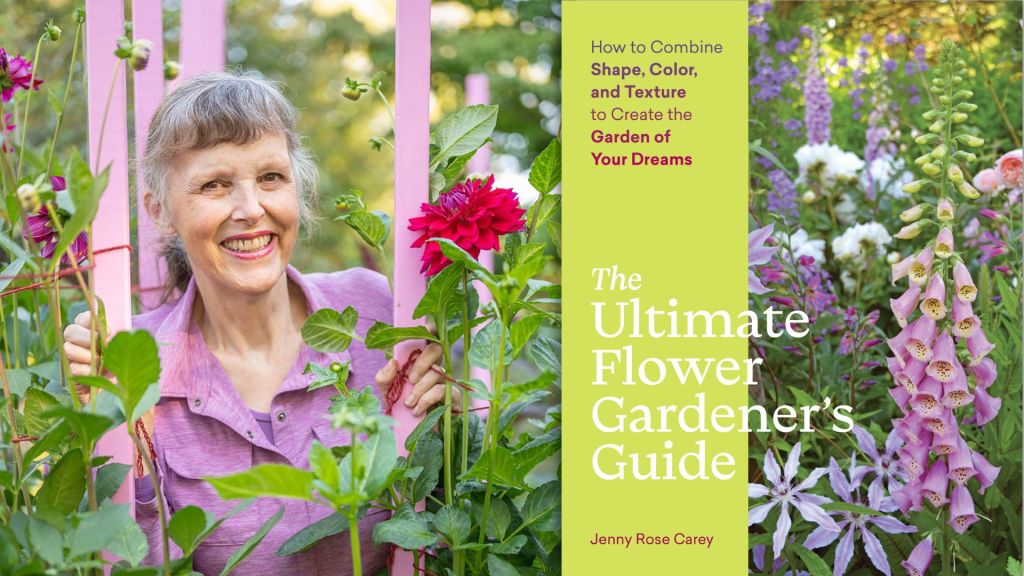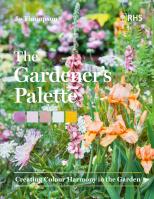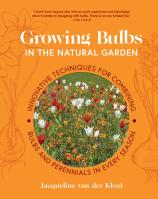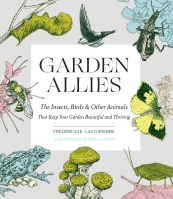Flower Gardening with Jenny Rose Carey

Jenny Rose Carey is a renowned gardener, educator, historian, and author, and the former senior director at the Pennsylvania Horticultural Society’s Meadowbrook Farm in Jenkintown. She previously worked at Temple University for over a decade, first as an adjunct professor in the Department of Landscape Architecture and Horticulture and then as director of the Ambler Arboretum.
She is an avid hands-on gardener who has gardened in both England and the United States. Her Victorian property, Northview, contains diverse garden spaces, including a cutting garden, an herb garden, a dry garden, and various mixed flower bed.
Flower Garden Frequently Asked Questions
The most frequently asked question that I get asked about flower gardening is, ‘how do I get my beds and containers here at Northview to look so flowery?’.
I explain that I have been growing flowers for many years and that I learned as I went along. It is a journey that is fun and, at times challenging, but it provides a lifetime of joy in the process.

How to create a “cottage-garden”?
My favorite flower garden style is a plant-packed cottage-garden look. The plants jostle for their own bit of space and grow among and between their neighbors. There is very little empty bare soil or mulch and if I see some, I fill it with bulbs, plants, or a sprinkling of seeds.
This lavish look is not achieved overnight. It takes time to get to know what flowering plants you like, and these will probably be included every year. There will be others that you grow once; you didn’t really love them, so you don’t grow them again. You will also realize that there are some flowers that relish your environmental conditions and do well, so you add more of them next year.

How to plant a garden that blooms all season long?
There are several other methods that I use to ensure that I have a flowery garden throughout the growing season.
The first thing I do is to plant my flowering plants closer than is suggested. This provides instant gratification, but may mean that I need to dig up perennials or hardy bulbs in a couple of years, and move them further apart. It is worth the extra effort to me because the initial plants merge together and leave no room for weeds. Also, the soil surface is now shaded by foliage, so you don’t need to water as often.
How to combine perennials and annuals?
Another way that I achieve this look is to use all possible types of herbaceous flowering plants in a bed. The backbone of your flowering choices are perennials that hold the garden composition together with their long-lived foliage and their time-specific burst of blooms. In between the perennials, there is space to tuck in some hardy or tender bulbs, a few biennials, and a selection of annuals. Each of these plant life cycles has a certain time and length of bloom, flower shape, and colors. In this way, your garden is plant-packed and has flowers blooming in succession.
A simple way to make your garden more flowery is to incorporate plenty of annual plants. Annual plants will continue flowering as long as the growing conditions
suit them. There are two main types of annual plants, so choose the right type to suit your upcoming season.
Cool-season or hardy annuals are perfect for spring or fall where the nights might be chilly. Easy ones to tuck in include pansies, violas, and pot marigolds. For the summer, add in warm-season or half-hardy annuals such as zinnias, cosmos, or African marigolds. Provide your annual plants with good compost-rich soil, water them well, and deadhead all spent flowers.

How to save flower seeds?
An easy approach to making your garden super flowery is to rely on annuals that are grown from seed. These are such good value for money because, from one cheap packet, you can get tens or hundreds of baby plants.
I use a lot of self-sown annuals and biennials such as foxgloves, poppies, larkspur, and love-in-the mist. These are old-fashioned plants that garden visitors love. Once these plants finish blooming, we let them set seed and then we sprinkle these seeds around the garden. The seeds then germinate at some time in the future in places that suit their needs.
I call this adding ‘bargain flowery fullness’ to the garden. Flowering bulbs can also provide your garden with a flowery fix. Look out for pots of bulbs that are almost ready to flower. Easy ones to add are daffodils or tulips for spring; or lilies and dahlias for summer. Plant them in your bed or leave them in their pots and pop the container under some foliage for a quick bloom boost. Just remember to water them regularly.
Creating a flowery garden takes experience to refine the combinations, but that is part of the fun – you learn as you go along and every year your containers and flower beds will look different.
What flowers will attract pollinators?
The simple answer is that any plant with single flowers that has obvious floral parts is going to attract some type of pollinating animal. Choose a variety of differently shaped flowers that will suit the mouthparts of diverse insects or birds, and mix up the flower colors too.
Stay away from grasses that are wind pollinated and ferns that do not flower. Instead, load up your bed or container with a succession of flowers that bloom throughout the growing season.
Birds can see red flowers clearly, but bees see in ultraviolet light, so what they see differs from us. They are often drawn to blue, purple, white, and yellow. Night flying moths are attracted to light-colored evening bloomers, and butterflies go for flowers that open in the day that are large enough for them to land on.
A couple of other tips for pollinators are to plant one type of flower to attract pollinators in masses. Lean into flowering plants that are native to your area, and do not spray insecticides of any type that will kill precious pollinators.

Read the Book
“Full of practical insights, ideas, and inspiration to help you grow the flower-packed garden of your dreams.”—Greg Loades, author of The Modern Cottage Garden
The colors, shapes, and scents of flowers are as ravishing to the senses as to the soul. But it’s all too easy get things wrong: colors that clash, flowers that bloom at the wrong time, plants that fail to thrive. Enter The Ultimate Flower Gardener’s Guide by expert gardener Jenny Rose Carey. She tells you exactly how to get started, how to combine plants for the most spectacular effects, and how to keep your garden going from year to year. Whether you’re interested in dramatic color combinations, how best to use a favorite flower, or how to create a garden for a specific purpose, such as nourishing pollinators, you’ll find the answers in this friendly, information-packed book. As Jenny herself says, “Don’t be afraid—just have a go!”




